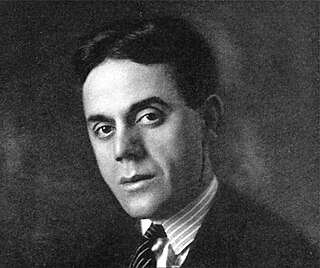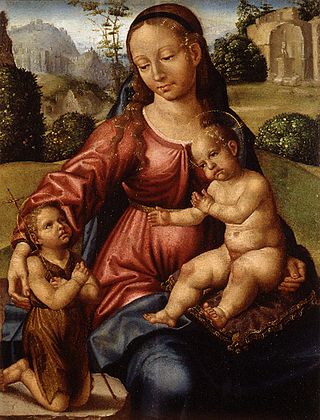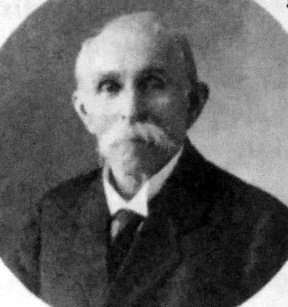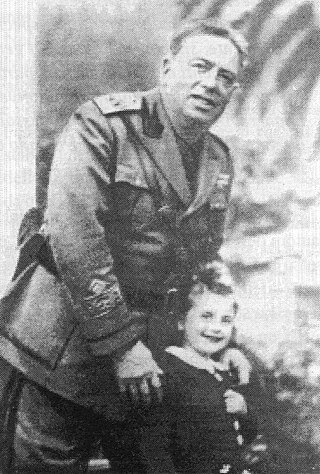Related Research Articles

Pietro da Cortona was an Italian Baroque painter and architect. Along with his contemporaries and rivals Gian Lorenzo Bernini and Francesco Borromini, he was one of the key figures in the emergence of Roman Baroque architecture. He was also an important designer of interior decorations.

Franco Rocchetta is an Italian politician, entrepreneur, philologist and history populariser, who is usually described as the "father" of present-day Venetian nationalism and independentism.

Giuseppe Spataro was an Italian politician.

Francesco Zugno was an Italian painter of the Rococo period who had a successful career in Venice.

Antonio Randa was an Italian painter of the classicist period, active in Ferrara, Modena, Rovigo, Florence, Comacchio and his native Bologna.

Jimmy Savo, was an American vaudeville, Broadway, nightclub, film and television performer, comedian, juggler, and mime artist.

Pablo da San Leocadio or Paolo da Reggio was an Italian painter from Reggio Emilia, who was mostly active in Spain.

Giovanni Battista Cavagna, also known as Cavagni or Gavagni was an Italian architect, engineer, and painter mainly in Naples, but also in Rome and Ascoli Piceno, Italy.

The church of Santi Severino e Sossio and the annexed monastery are located on via Bartolommeo Capasso in Naples, Italy.

Giuseppe Di Giacomo is an Italian philosopher and essayist.

Cenni di Francesco di ser Cenni was an Italian Gothic painter active in Florence between 1369/1370 and 1415. His only signed work is the fresco of the True Cross at the Cappella della Croce di Giorno at the church of San Francesco in Volterra, painted in 1410. A couple of dozen works have been attributed to Cenni di Francesco on the basis of a similarity of style with the fresco.
Francesco Maria Mirabella was an Italian historian, educator, and poet.

Pietro Maria Rocca was an Italian historian.

Monsignor Vincenzo Regina was an Italian presbyter and historian.
Pasquale Verrusio was an Italian painter, sculptor and engraver.
Giovanni Cola di Franco was an Italian Mannerist architect active between 1596 and 1621, mainly in Naples, where he was born and died. He collaborated with contemporary architects such as Francesco Grimaldi, Bartolomeo Picchiatti and Giovan Giacomo Di Conforto.
Alice Ceresa was a Swiss writer.
Gioacchino Di Marzo was an Italian art historian, librarian and Jesuit. He was librarian to the Comunale di Palermo as well as a historiographer and one of the founders of modern Sicilian art history.

Silvio Parodi was an Italian Fascist politician and soldier.
Francesco Cesare Casula is a Sardinian historian from Italy.
References
- ↑ Personaggi Storici of Amelia, cfr dott. Paola Mangia I Geraldini di Amelia nell'Europa del Rinascimento - Atti del convegni storico Internazionale Amelia 21-22 novembre 2003).
1. Angelo Di Tommaso: Gian Francesco Perini Pittore di Amelia e la sua Coena Domini, Amelia, Tip. F. Pastura - Petrignani, 1928, A5, pp. 50. In http://www.grupporicercafotografica.it/biblio.htm
2. Piero Adorno: Giovan Francesco Perini - Un pittore quasi sconosciuto del '500, fotografie di Franco Della Rosa, Antichità Viva, Anno XV, n. 2, Editrice Edam, Firenze, 1976. In: http://www.grupporicercafotografica.it/adorno.htm, pp. 18–28.
3. Franco Della Rosa et altri: Amelia e l'amerino - Storia Guida, Gruppo Ricerca Fotografica, Tip. Quatrini Archimede & Figli, Viterbo, 1984. In http://www.grupporicercafotografica.it/Storia.htm, pp. 53–57.
4. Franco Della Rosa: Usanze pittoriche celate nelle opere “Zuccari” e Perini tra le pieghe di due affreschi amerini, Gruppo Ricerca Fotografica, Ch-Cumün da Val Müstair - Grischun. In http://www.grupporicercafotografica.it/GRF2015-2.pdf, p. 12.
5. Franco Della Rosa: L’Opera del povero Giovan Francesco Perini è stata proprio un’Ultima Cena, Gruppo Ricerca Fotografica, Ch-Cumün da Val Müstair - Grischun. In http://www.grupporicercafotografica.it/GRF2016-5.pdf, p. 6.